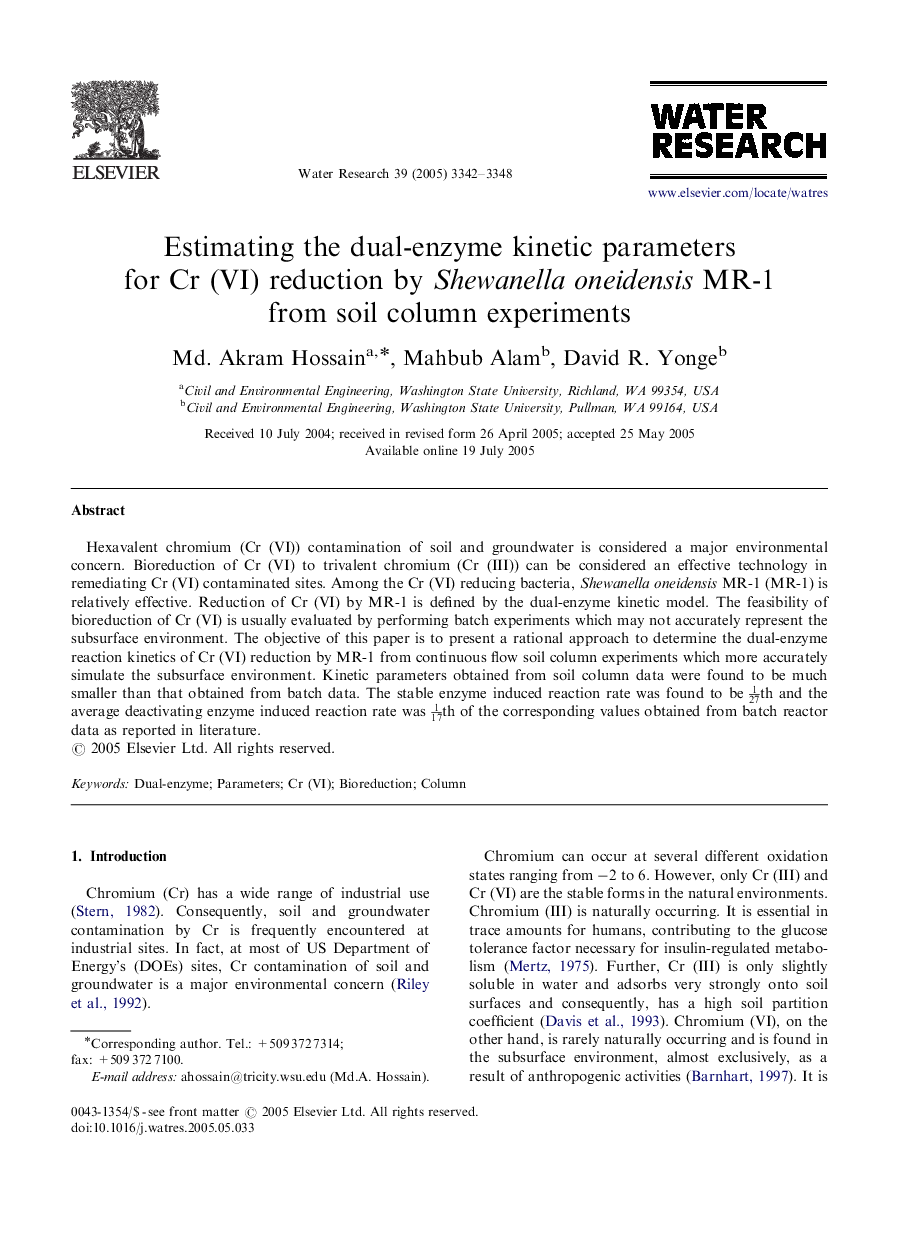| کد مقاله | کد نشریه | سال انتشار | مقاله انگلیسی | نسخه تمام متن |
|---|---|---|---|---|
| 4486960 | 1317006 | 2005 | 7 صفحه PDF | دانلود رایگان |

Hexavalent chromium (Cr (VI)) contamination of soil and groundwater is considered a major environmental concern. Bioreduction of Cr (VI) to trivalent chromium (Cr (III)) can be considered an effective technology in remediating Cr (VI) contaminated sites. Among the Cr (VI) reducing bacteria, Shewanella oneidensis MR-1 (MR-1) is relatively effective. Reduction of Cr (VI) by MR-1 is defined by the dual-enzyme kinetic model. The feasibility of bioreduction of Cr (VI) is usually evaluated by performing batch experiments which may not accurately represent the subsurface environment. The objective of this paper is to present a rational approach to determine the dual-enzyme reaction kinetics of Cr (VI) reduction by MR-1 from continuous flow soil column experiments which more accurately simulate the subsurface environment. Kinetic parameters obtained from soil column data were found to be much smaller than that obtained from batch data. The stable enzyme induced reaction rate was found to be 127th and the average deactivating enzyme induced reaction rate was 117th of the corresponding values obtained from batch reactor data as reported in literature.
Journal: Water Research - Volume 39, Issue 14, September 2005, Pages 3342–3348